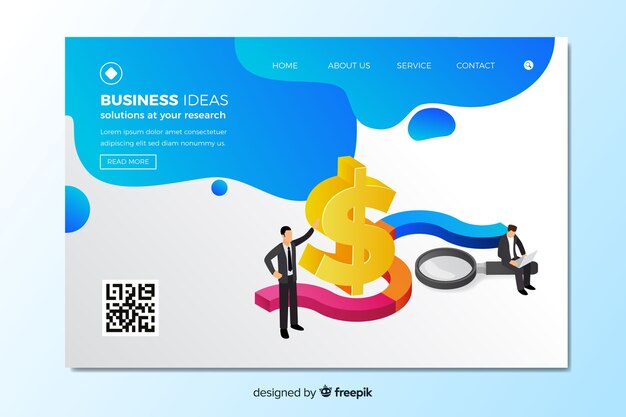
If you’re dreaming of starting your own tech company, the possibilities are endless. But remember, not every idea will turn into a successful business. To increase your chances, you need to understand the latest trends, innovations, and successful business models in the tech sector. This will help you find a concept that aligns with your passion, skills, and resources.
In this piece, we’ll explore the tech landscape, from niche markets to proven examples and expert insights. The aim is to help you find profitable startup ideas and seize opportunities to achieve success on your own terms.
Technology is everywhere these days, offering limitless potential for entrepreneurs to create value. This could be anything from software and apps to hardware devices, networking infrastructure to AI algorithms.
To make things easier, consider tech entrepreneurship through two main perspectives:
1) Niche Sector: What specific problem will your startup solve for customers?
2) Business Model: How will you deliver this solution in a profitable way?
The most promising opportunities often come from combining different models and sectors.
Tech innovation isn’t just about making money. It’s also about advancing human progress by solving problems through engineering, automation, and computing power. With a positive, ethical mission, tech startups can significantly improve people’s quality of life.
Technology is now used in almost every field, from agriculture to genomics. To find needs and opportunities, conduct market research in the following areas:
– Industries: Manufacturing, Healthcare, Finance, Education, Retail, Logistics, etc.
– Technologies: Cloud, Mobile, Blockchain, AI, Quantum Computing, Neurotech, Green Energy, etc.
– Products vs Services: App Development, Hardware/IoT Devices, Networking Platforms, Managed IT Services, etc.
Analyzing these areas can help you find profitable niche targets.
While there are variations across industries, these core technology sectors have proven to be profitable for startups:
– Software: Developing SaaS platforms and mobile apps can scale easily with cloud infrastructure.
– Data & AI: Collecting, managing, securing, and deriving insights from data provides immense value.
– IoT & Hardware: Connected devices and custom equipment offer physical product opportunities.
– IT & Cloud Services: Managing technical infrastructure for clients offers resilient revenue with services.
– Emerging Innovation: New technologies like blockchain, quantum computing, and biotech have major potential.
Even in the shadow of tech giants, small startups can thrive by targeting niche markets or locations. Here are five concepts that show strong profit potential:
– Specializing in industry domains allows for providing customized tools. Examples include financial SaaS, medical software, contractor management platforms.
– Apps can solve countless consumer and business problems via users’ ever-present smartphones. Gaming apps have made some founders billionaires.
– Protecting sensitive information is crucial for businesses, opening possibilities for managed services.
– Powerful predictive algorithms and data analysis drive automation, earning high margins for tech providers.
– With more data and applications online, helping companies utilize scalable cloud infrastructure sustains solid revenue.
While software and services offer lean operation models, innovating hardware, IoT, and emerging technologies like drones, VR/AR, and blockchain provide alternative opportunities.
In addition to current lucrative niches, entrepreneurs should keep an eye on the latest tech developments for future concepts:
– Blockchain: Cryptocurrency and decentralized finance solutions are just getting started.
– IoT Innovations: Connecting appliances, vehicles, products, and cities unlocks new functionality.
– EdTech and Online Learning Platforms: Digital education expands access and personalization.
– HealthTech and Telemedicine: Remote care and AI diagnosis improve healthcare outcomes.
– GreenTech and Sustainability: Renewables, EV charging networks, hydroponics, and more support climate goals.
Identifying a profitable niche is just the start. The real determinant of success is how effectively you execute your concept. Here are some best practices:
– Efficient Development and Testing: Use agile sprints, prototyping, and user testing to validate product-market fit. Continually gather user insights.
– Effective Marketing Techniques: Use content, digital campaigns, and partnerships to attract users and buyers cost-effectively. Let data guide your decisions.
– Scalability and Adaptability: Plan operations and technology to allow rapid scaling. Remain flexible to meet evolving user needs quickly.
In researching this article, I spoke with numerous founders and investors in the tech space to understand the real patterns behind startup success. Their advice and examples debunked some myths about the difficulty of starting tech businesses.
While access to capital, development skills, and timing do play a role in outcomes, committed founders with sound concepts are well-positioned to succeed.
In conclusion, there are countless opportunities for tech entrepreneurship across industries today. While markets like SaaS, mobile apps, AI/ML, and cloud computing have proven models, emerging innovations provide alternative options. With user-centric design and efficient execution, almost any tech concept that provides real utility for customers has potential.
If you’re exploring startup ideas, remember that the tech landscape offers endless ways to drive progress through innovation. I hope this overview and examples help you seize your own startup opportunities today!
Starting a tech business can cost anywhere from $5,000 to over $500,000, depending on team size, development complexity, hardware needs, and growth ambitions. Many founders self-fund the first versions with personal savings before seeking investors.
The key steps to launch a tech startup typically include:
1) Ideating concepts around target users and markets
2) Evaluating feasibility and profitability potential
3) Creating wireframes and product specifications
4) Developing an MVP version for testing
5) Gathering user feedback
6) Securing funding if needed
7) Launching the 1.0 product and executing the go-to-market plan.
